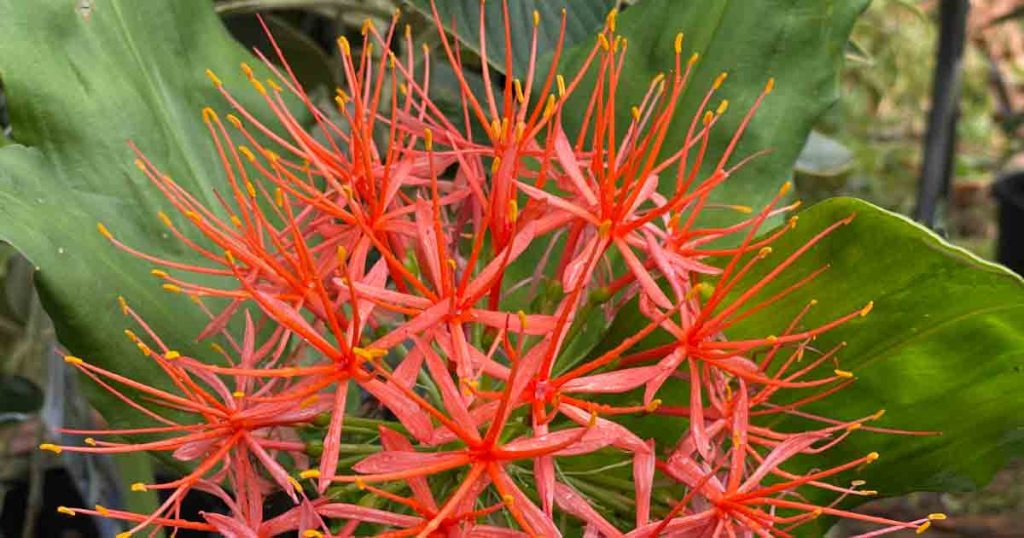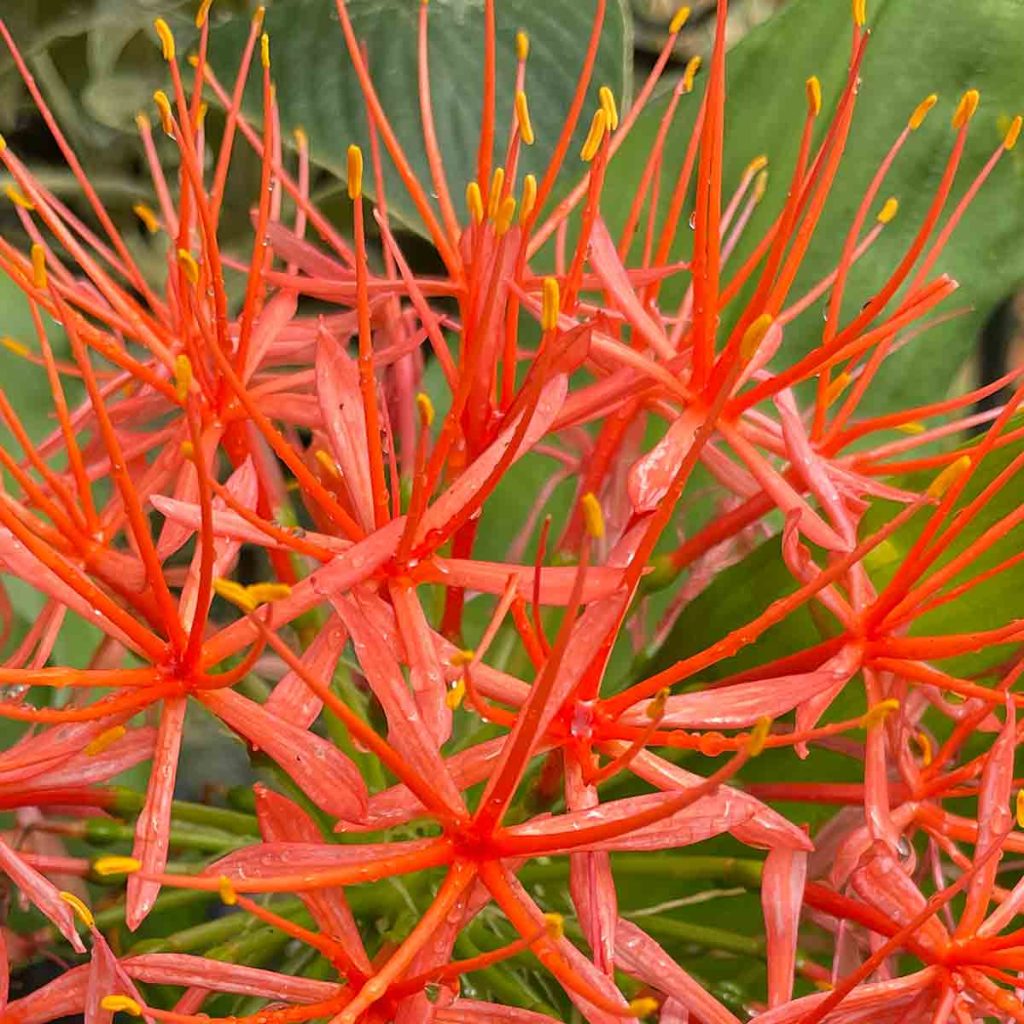With its large rounded umbel made up of 100s of small flowers Scadoxus multiflorus ssp katharinae is a standout in the garden or in a container.

It is from South Africa and widespread from Senegal one the west coast to Somalia on the east coast, so sub-Saharan African climate.
Previously known as Haemanthus multiflorus, this is a flowering bulbous plant, evergreen in warmer climates but not so in cooler climates. The sub species katharinae has larger flowers on taller stems than the species itself.
Growing well in part shade, the flowers are a bright orange to red and appear in late summer. In the garden it creates a tropical look and the foliage being a good green adds interest as well.

The foliage is lance shaped and held fairly upright. The flowers are followed by small berries that turn red as they ripen.
How to grow Scadoxus multiflorus ssp katharinae
Choose a position in at least part shade, not really deep shade.
A frost free position is essential. So grow in containers in colder zones.
- Dig soil over well adding humus/compost and aged some organic slow release fertiliser. Some blood and bone can also be beneficial.
- Water in with a liquid seaweed fertiliser.
- Mulch around the plant to suppress weeds and provide a cool moist root run.
- Water during any dry periods.
- Once established, clumps are best not disturbed for best flowering.
Propagation
Easy from offsets removed from clumps, just remember that once disturbed Scadoxus multiflorus ssp katharinae may not flower the next year.
Propagation from seed
- . Wait until the seed turns red and then until the skin around the seed begins to dry and wrinkle a little.
- The seeds need to be carefully cleaned as they are soft.
- Seed needs to sown almost immediately as fresh seed germinates well, old seed is problematical.
- Sow the seed on the surface of a loose potting mix with a little perlite mixed through. Sift a little more potting mix over the top and water in well with a liquid seaweed fertiliser.
- Keep moist and wait for germination.
- Once seedlings have reached a good size, pot them up into individual pots.
- From seed to flowering plant will take 3 – 4 years.

